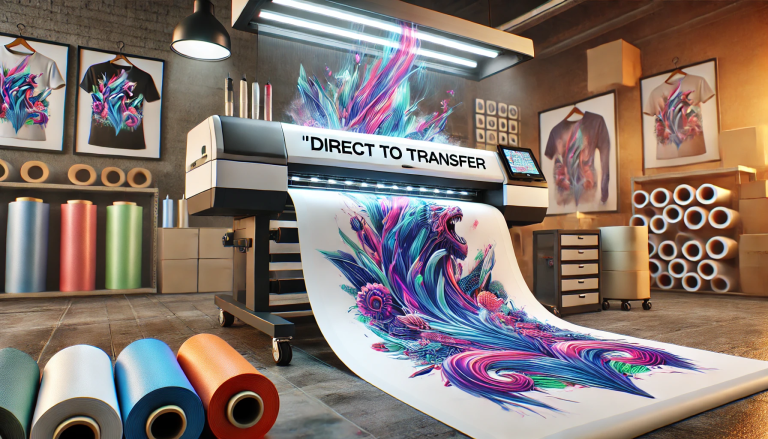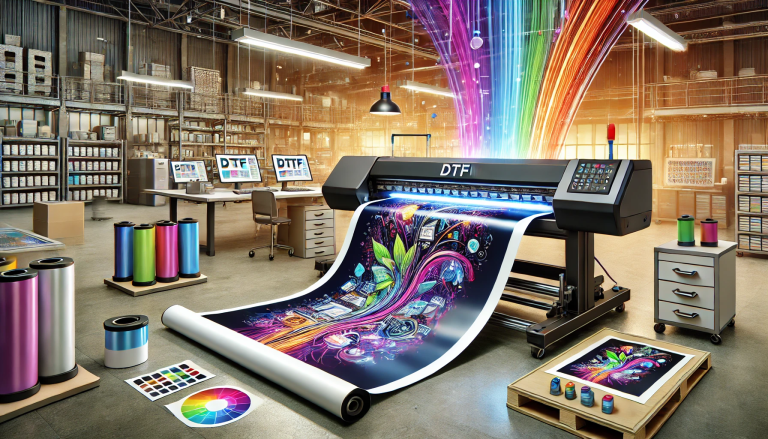Direct-to-Film (DTF) printing is a relatively new technology in the textile industry, allowing for vibrant, high-quality prints on a variety of fabrics. One of the frequent questions regarding this technology is whether DTF prints feel like vinyl, a material traditionally used in heat transfer printing. This article explores the tactile qualities of DTF prints in comparison to vinyl, examining their differences in feel, flexibility, durability, and application processes to understand how they impact the wearer’s experience and the textile industry as a whole.
1. Introduction to DTF and Vinyl Printing Technologies
Direct-to-Film printing involves printing a design onto a special film, which is then transferred onto fabric using heat and pressure. This process allows for detailed designs with a wide range of colors. Vinyl printing, on the other hand, involves cutting out designs from colored vinyl sheets and then heat-pressing them onto the fabric. Both methods are popular for creating custom apparel and accessories, but they differ significantly in their application processes and the feel of the finished product.
2. Tactile Qualities: DTF vs. Vinyl
The feel of a printed fabric is crucial as it affects comfort, wearability, and the overall aesthetic appeal. DTF prints are known for their soft hand feel. The ink and film used in DTF printing become part of the fabric, resulting in a print that moves with the fabric without cracking or peeling. This integration ensures that the print feels less like an additional layer and more like an integral part of the fabric itself.
In contrast, vinyl has a distinct texture and adds an additional layer on top of the fabric. This can result in a stiffer feel, particularly with thicker vinyls. While advancements have been made in vinyl technology to produce thinner, more flexible vinyls, the tactile difference from the fabric is still noticeable. Vinyl prints may feel like a plastic layer and can sometimes crack or peel away from the fabric with wear and washing.
3. Flexibility and Durability
Flexibility is another critical factor, especially for garments that require movement. DTF prints offer superior flexibility, enabling the fabric to stretch without distorting the design. This flexibility makes DTF ideal for sportswear and other apparel where movement is essential.
Vinyl prints, although improved in flexibility with newer materials, can restrict the fabric’s natural movement. Over time, especially with heavy use and repeated washings, vinyl may crack or peel, affecting the garment’s appearance and feel.
Durability is where vinyl traditionally held an advantage, with some types of vinyl being highly resistant to wear and tear. However, DTF technology has rapidly advanced, producing prints that are equally durable under normal wearing and washing conditions. Both DTF and vinyl prints can last a long time with proper care, but the way they age differs. DTF prints maintain their soft feel and color vibrancy, whereas vinyl may show wear more visibly.
4. Application Process and Environmental Impact
The application process for DTF is more complex and requires specific equipment to print and transfer the design onto the fabric. This process, however, allows for greater detail and color range in designs. Vinyl printing is simpler and can be done with a cutter and heat press, making it accessible for small-scale or DIY projects.
Environmental considerations are increasingly important in the textile industry. DTF printing uses less energy and produces less waste than traditional vinyl cutting and weeding processes. The inks used in DTF printing are typically more eco-friendly than the PVC material used in many vinyls, which can be a concern for those looking to reduce their environmental footprint.
5. Conclusion
While DTF prints and vinyl might initially seem similar as methods for applying designs to fabric, they differ significantly in feel, flexibility, and durability. DTF prints offer a softer, more integrated feel that moves with the fabric, providing greater comfort and flexibility. This makes DTF an excellent choice for high-quality, durable prints on apparel and accessories. Vinyl, with its distinct feel and texture, remains a viable option for specific applications, particularly where the added texture is desired or for simpler projects. As technology advances, the gap between these two methods may narrow further, but for now, DTF stands out for its superior feel and flexibility, marking a significant advancement in textile printing technology.




